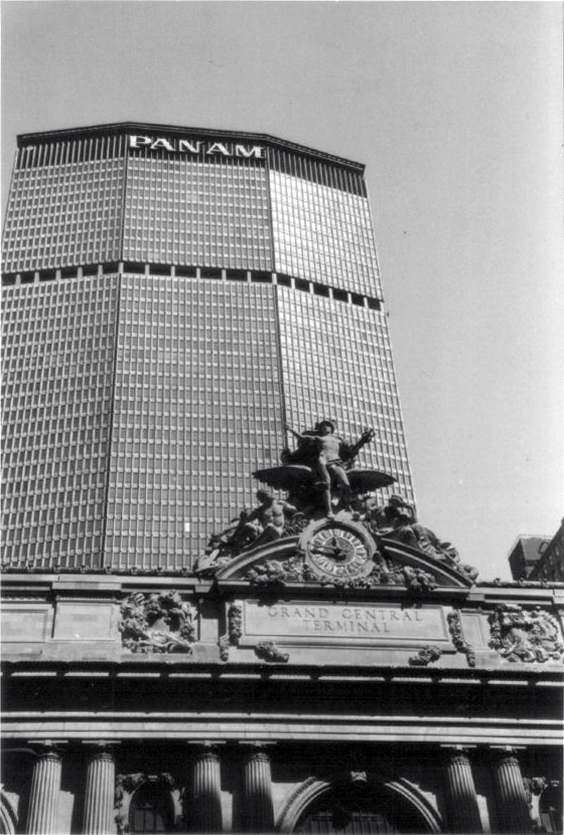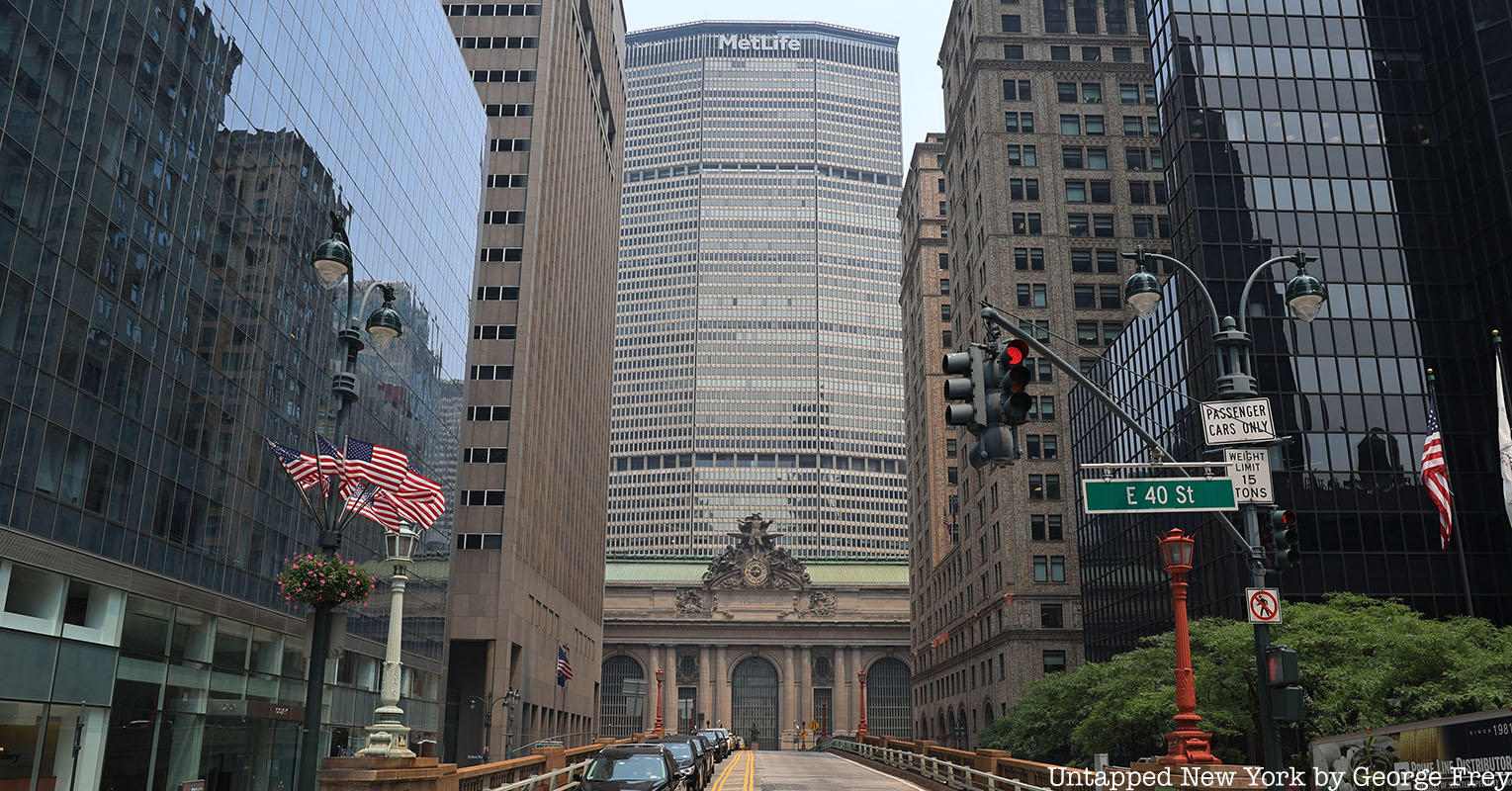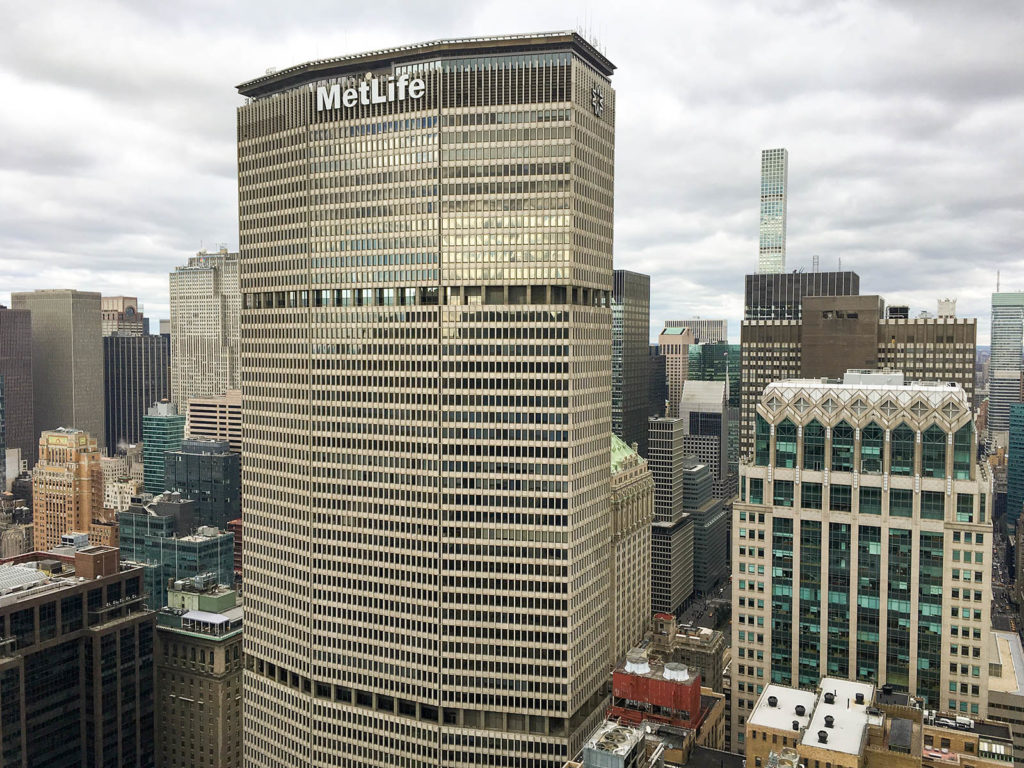Richard Roth Jr., one of the grandsons of esteemed architect Emery Roth, was a fresh new architect right out of school when Project X was set to begin. It was slated to be a high-profile tower directly behind Grand Central Terminal that would revolutionize the architecture along Park Avenue and in the city as a whole. The project, which would become the Pan Am Building (now MetLife Building), would bring together two leading figures in modern architecture: Walter Gropius and Pietro Belluschi. It was Roth’s job, though, to make sure it all came together.
The Pan Am Building, now known as the MetLife Building, was at the time one of the city’s most controversial buildings due to its position and style. But today, many preservationists are working to maintain and protect the building. To celebrate the building’s 60th anniversary this week, we’re uncovering 10 secrets of the Pan Am Building, tracing back to the first proposals up to today.
The legacy of the MetLife Building, as well as its monumental construction, was discussed by Roth himself in a talk moderated by Untapped New York’s Chief Experience Officer Justin Rivers. You can watch the talk, along with a series of other exclusive interviews with the late Richard Roth Jr. in the Untapped New York Insiders on-demand video archive. The archive has over 150 past virtual experiences you can watch whenever you want. Become an Insider today to unlock the archives!
1. The Pan Am Building used to have a helicopter deck

The Pan Am Building once had a helicopter deck on its roof, situated at 808 feet high. After a contentious approval process, helicopter service began in December 1965, and trial runs for the roof began with a Chinook helicopter. The service was operated by New York Airways, which flew Vertol 107 helicopters from the helipad to the Pan Am terminal at JFK International Airport. The idea of a multi-modal, multi-level city was first popularized in 1908 by Moses King, and just 60 years later that dream came to fruition. In 1966, the architectural historian Reyner Banham wrote in The Architects’ Journal: ”There is no other way to come into the island city of Manhattan. From now on, it has to be a helicopter or nothing.”
The concrete helipad was in operation from 1965 to 1968. The Vertol 107s helicopters also serviced Teterboro Airport for a period of time. However, few people were in demand of the service, so the helipad shut down just three years later in 1968. The helipad reopened in early 1977 with flights aboard Sikorsky S-61 helicopters, but the service was shut down just three months later due to a deadly accident. On May 16th, 1977, a rotor blade broke off a helicopter after the landing gear failed on the front and the helicopter toppled over. The blade fell down the side of a building and hit a window of the Pan Am Building on the 36th floor. From there, it split into two, with one part killing a pedestrian from the Bronx on Madison Avenue while she was waiting for the bus. More pieces of the rotor blades were found four blocks north of the building.







